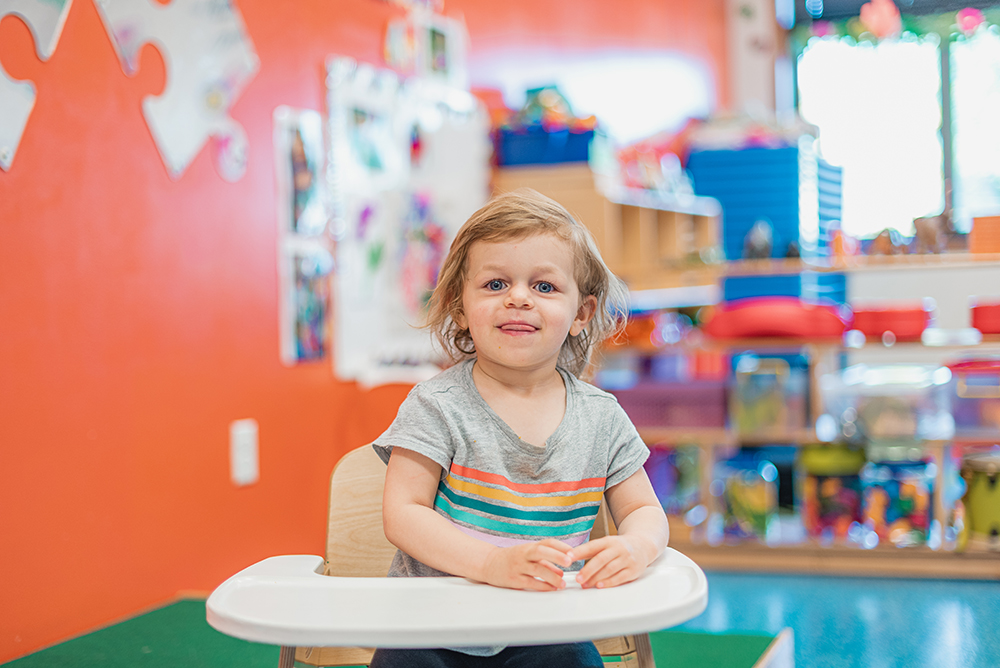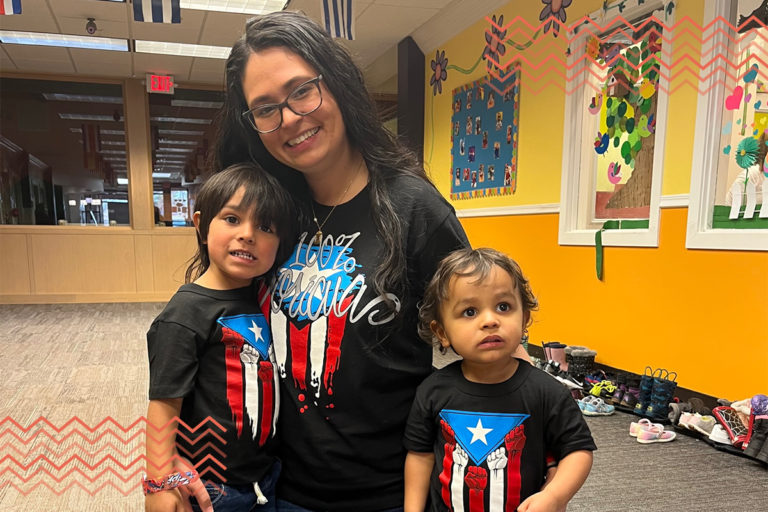Toddler Educational Activities

At Casa de Corazón, we are passionate about education for children of all ages. Toddlers are naturally busy and curious, so we’ve put together a list of educational activities that can satisfy their curiosity while teaching them some important skills and information.
Making Music
If you have a toddler, you know they love to make noise. They’d pull your pans out of the cupboard and drum on them all day if they could. Instead of allowing your tot to use your household items, make kid-sized instruments out of items from your recycle bin.
- Maracas – Fill some plastic Easter eggs with dry rice or beans. Tape them shut and give it a shake! To make them more maraca-like, tape the entire egg to the concave side of a plastic spoon so there’s a handle.
- Drums – Cover the top of some different-sized tin cans with fabric. If they already have plastic lids, just leave the lids on and skip the fabric cover. Give your toddler some markers to decorate the side of the drum, then use a couple of spoons as drumsticks.
- Guitar – Cut a circular hole in the lid of a shoebox and tape the lid back onto the box. Stretch four or five rubber bands of varying thicknesses and sizes around the box, so they all stretch across the hole. You can secure the rubber bands using tape on the bottom of the box.
- What are the total expenses?
- Tambourine – Place dry rice or beans on a paper plate. Set another paper plate on top of the first plate so the surfaces face each other. Staple around the edges of the plates.
Once you’ve got all your instruments built, gather all the toddlers in the neighborhood and have them put on the greatest show you’ll ever experience!
Learning Words and Rhymes
Young children love to go on walks, and as a parent of a toddler, you’ve probably been on your fair share of adventures around the neighborhood. Of course, there are plenty of things to see and experience, but you could take it one step further to create an educational experience for your youngster. As you walk around, point out different words and letters so your little one can begin to learn words, sounds, and rhymes.
For example, point to a stop sign and say, “That says, stop.” You can then help your child sound out each letter. Once he or she has listened to and repeated the sounds, you can help the child come up with some rhyming words such as “hop,” “mop,” and “top.”
If your child already knows the letters of his or her name, you can point to street signs that have the same letters. For example, if your son is named Mark, and you pass a sign that says “Maple Street,” point out the “M” and help your son understand it’s the same as the “M” in his name. These types of games are highly educational, take no additional preparation to what you’re already doing during your day, and your kids will love it.

Making a “Clean” Mess
There are some clean ways your toddler can make a mess. Kids this age love to dig in the dirt and dump things out, but you don’t have to fill the home with dirt for your child to enjoy a good mess. Instead, give your tot an opportunity to create a “clean” mess with these toddler activities:
- Rice Trays – If you have a shallow baking sheet, dump a couple of cups of dry rice in it, throw in some small plastic animals, and your child will get lost in his or her imagination for hours.
- Play-Doh – Play-doh is squishy and colorful and fun to make into silly shapes. Many toddlers will sit for a long time if they’ve got a handful of play-doh. Of course, you can buy some at the store, but your little one would probably enjoy making it with you. There are a lot of different play-doh recipes you can use, many of which are safe if your child decides to take a bite.
- Goo Bags – If finger paint sounds fun, but you don’t want to deal with spills and stains, a goo bag might be the perfect solution. Using this recipe for the goo, make a batch, put it in a Ziploc, zip it shut, and put some duct tape over the zipper opening to keep it extra secure. Your toddler can now “draw” with his or her little finger, making designs in the goo from the outside of the bag. If your tot would rather just squish it around and play with it, that’s an option as well.
Playing with Shapes
Take five minutes each day to teach your toddler a certain shape. Throughout the remainder of the day, make a point to find that shape in everything you do. For example, you might start with a circle. A ball the child plays within the morning is a circle. Your youngster’s lunch plate might be in the shape of a circle. You might have a circular mirror on the wall you can point out, or perhaps the knobs on your cupboards.
Encourage your toddler to find the shapes throughout the day as well. For example, instead of pointing to the knob on a cupboard and exclaiming, “That’s another circle!” you could point to it and ask, “What do you see there?” This allows the child to remember what he or she learned and to feel that sense of accomplishment. This is another game that doesn’t take too much additional preparation, and your kids will love participating in the “game” all day long.
Learning About Water
What sinks and floats in water? Fill a plastic bin or dish with water. If you have a plastic pool, you could use that. Go on a “treasure hunt” with your toddler to find things that can go in the water. You might get a tote or a bag to put the items in. Some items might include plastic animal toys, balls, dishes, rocks, and other items from nature.
Have your toddler pick up one item at a time and discuss why he or she thinks the item will float in the water or sink to the bottom. Once you’ve made your predictions, the child can place the item in the water. What did you discover? Depending on your toddler’s age and ability to comprehend, you can explain how light, hollow things typically float, but solid, heavy things typically sink.
What happens to water added to oil? Grab a shallow dish such as a casserole dish or pie pan. Add a couple of cups of oil to the pan. In a few separate small bowls, combine water with different shades of food coloring, such as red, blue, green, or yellow. Help your toddler suck some colored water into a pipette and squeeze it into the oil. Do this over and over again and watch the colorful drops turn into an interesting masterpiece.
Get the Education Started
It’s never too early to get your kids learning. If you have toddlers at home, there are a lot of activities you can do to keep them entertained and start them on a path to a proper education. For more ideas or to enroll your toddler in an educational program, contact Casa de Corazón today.

